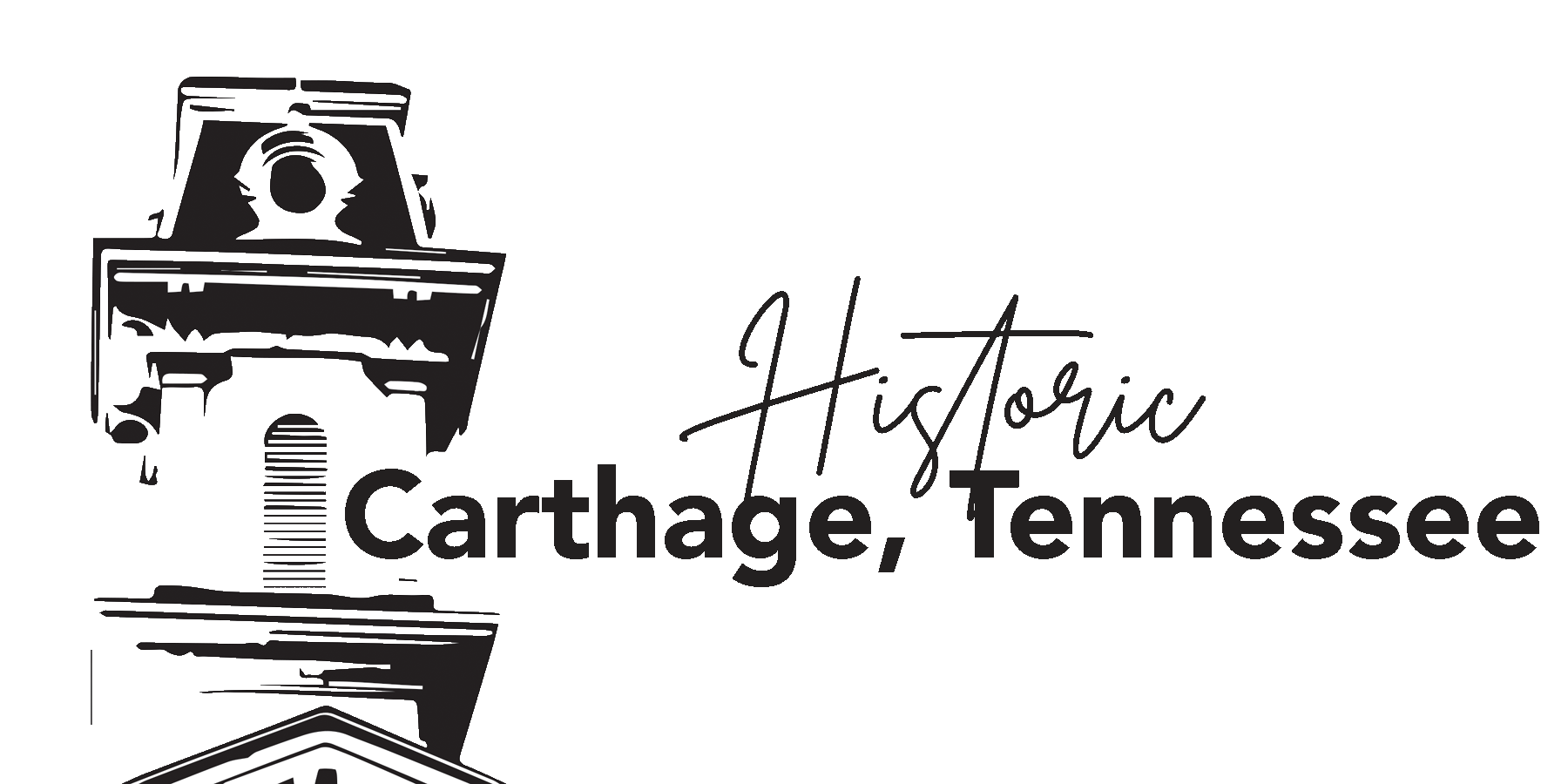
Carthage, the county seat of Smith County, Tennessee, was founded in 1804 on the north bank of the Cumberland River - slightly west of the junction of the Caney Fork River. Carthage founder and Revolutionary War Captain, William Walton, arrived in Tennessee in the late 1780s to claim his land grant which he had earned from his service. He eventually settled on his land located on the Cumberland River's north bank, at the mouth of the Caney Fork.
Walton directed the construction of the Walton Road (Cumberland Turnpike), an early stagecoach route that connected the Knoxville area in the east with Middle Tennessee. The route paralleled current day US-70 and upon its completion, the Walton Road served as the primary migratory route of settlers who traveled from East Tennessee to the settlements along the Cumberland River. Walton thereafter operated a ferry across the Cumberland River and a tavern along the road, around which a small community began to develop. Walton donated fifty acres of land in exchange for one dollar ($1) to Smith County commissioners who in turn sold lots. These proceeds were used for the erection of public buildings. Throughout the winter of 1805 the town was laid out and construction began.
After a post office was established in 1806, Carthage began gathering the attention of men of enterprise and business experience. The town's location at the confluence of the two rivers made it an important shipping and steamboat port throughout the first half of the 19th century. Carthage was dubbed "River City" due to its significance as an important stop for steamboat traffic. During the Civil War, Carthage became an important post in the eastern Highland Rim area of Tennessee. The town square was the control center of a major Federal base in the fight to control the Upper Cumberland River region.
The Walton Road continued to influence transportation routes into the late nineteenth and early twentieth centuries. The first section of the Nashville & Knoxville Railroad, which followed along the Walton Road, was opened in August of 1888. (The entire route was later better known as the "Nashville Route".) This section connected Lebanon to nearby Gordonsville. Carthage was bolstered by this railroad route and the Carthage branch expansion which was completed in December 1888. This connected Carthage to Hickman Junction.
By 1879, the new (and now historic) Smith County Courthouse had been fully erected on the downtown square in Carthage. It was referred to at the time as the "handsomest in the state". This building is known for its Second Empire architectural style, and mansard roof with a cupola. In 1979, the building was placed on the National Register of Historic Places. Within the downtown Carthage area there are seven additional sites that are also listed on the National Register.
Despite a modest population of 2,500, Carthage has been home to some significant statesmen. Cordell Hull practiced law in Carthage before his elections as U.S. Representative and U.S. Senator form Tennessee. He was appointed as the 47th U.S. Secretary of State in 1933 by President Franklin D. Roosevelt. Former U.S. Senator and Vice President Al Gore and his late father, U.S. Senator Albert Gore Sr., have all called Carthage their home. The younger Gore has announced each one of his political campaigns between 1976 and 2000 —including his 1992 vice-presidential bid with running mate Governor Bill Clinton— from the steps of the Smith County Courthouse. Carthage also holds the unique honor of producing two Nobel Peace Prize winners, Cordell Hull in 1945 and Al Gore in 2007.
